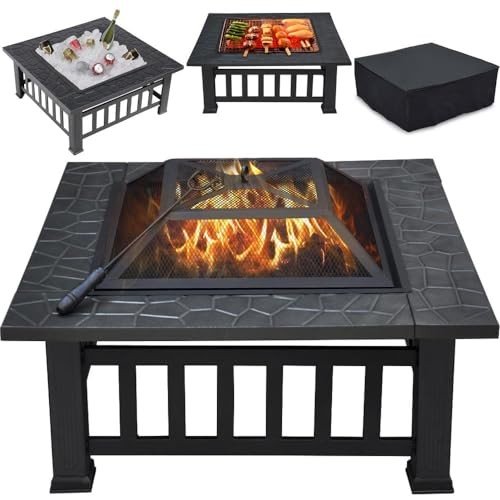The Timeless Appeal of Traditional Fireplaces in the UK
Traditional fireplaces have actually long been essential to homes throughout the United Kingdom, going beyond simple utility to become focal points of heat, convenience, and visual charm. This short article explores the enduring appeal of traditional fireplaces, exploring their history, design variations, installation factors to consider, and their modern-day relevance.
Historical Significance of Fireplaces
The fireplace has played a central role in British homes since middle ages times. Originally, they were vital for heating and cooking. Over the centuries, with the advent of central heating and technological advancements, fireplaces have changed into symbols of heritage and style.
Key Historical Milestones
| Date | Milestone | Description |
|---|---|---|
| 12th Century | Intro of Chimneys | Enabled indoor fireplaces to be typical, better ventilation. |
| 16th Century | The Renaissance impact | Fireplaces became more ornamental, showing the age's designs. |
| 18th Century | The Georgian Era | Established complex mantels made from wood and stone. |
| 19th Century | Victorian Era | Introduction of cast-iron and tiled fireplaces. |
| 20th Century | Decline and Modern Design | Shift towards gas and electric, with some revival of traditional styles. |
Types of Traditional Fireplaces
While contemporary styles focus on minimalism, traditional fireplaces frequently exhibit detailed craftsmanship and historic significance. Here are some popular kinds of traditional fireplaces commonly found in the UK:
Open Hearth Fireplaces
- Characterized by a large opening and generally built from brick or stone.
- Provides a cozy atmosphere and the sound of crackling flames.
- Needs a correct flue to redirect smoke outdoors.
Wood-Burning Stoves
- Enclosed units that burn wood for heat, often including a glass door.
- More efficient than open hearths, supplying much better heat retention.
- Offered in different styles, from rustic to contemporary.
Cast Iron Fireplaces
- Popular in the Victorian age, known for ornate styles.
- Resilient and renowned for outstanding heat conduction.
- Generally function elaborate patterns or motifs, improving visual appeal.
Tiled Fireplaces
- Often embellished with decorative tiles, these fireplaces display creative style.
- Common in the 19th century, tiles can include scenes or flower styles.
- Generally coupled with wood or cast iron parts.
Marble Fireplaces
- Prominent for their sophistication, these fireplaces are normally personalized.
- Marble uses a luxurious surface and matches different interior styles.
- They require cautious setup due to their weight.
Table: Comparison of Traditional Fireplace Types
| Fireplace Type | Heat Efficiency | Visual Appeal | Maintenance Needs | Fuel Type |
|---|---|---|---|---|
| Open Hearth | Low | High | High (chimney cleansing) | Wood |
| Wood-Burning Stove | High | Moderate | Moderate (wood supply) | Wood |
| Cast Iron | High | High | Low | Wood/Gas |
| Tiled | Moderate | Really High | Low (if non-usable) | N/A |
| Marble | Moderate | Extremely High | Moderate | N/A |
Factors to consider for Installing a Traditional Fireplace
Setting up a traditional fireplace can boost a home's character but includes specific factors to consider. Here are some points property owners must remember:
- Building Regulations: Always examine regional building regulations and policies. Installation might require permission, particularly if structural modifications are needed.
- Material Selection: Choose materials that match the home's architecture and personal style. Consider functionality alongside aesthetic appeal.
- Ventilation: Ensure proper ventilation through a chimney or flue to avoid smoke and gases from accumulating indoors.
- Safety Precautions: Install carbon monoxide gas detectors and ensure all security procedures are in location, particularly if utilizing wood-burning choices.
- Professional Installation: Engage a certified professional to make sure safe and effective installation, following security requirements.
Advantages of Traditional Fireplaces
Regardless of the increase of modern heating services, traditional fireplaces stay cherished for numerous reasons:
Aesthetic Charm
- Adds character to any space.
- Acts as a social focal point, enhancing events.
Psychological Comfort
- Supplies warmth not simply physically however mentally.
- Develops a cozy atmosphere perfect for relaxation.
Worth Addition to Property
- Improves the appeal of a home to prospective buyers.
- Frequently increases home worth due to their desirability.
Environmental Considerations
- Wood can be a sustainable resource when sourced sustainably.
- Traditional fireplaces can contribute less to energy bills compared to electric systems.
Regularly Asked Questions (FAQs)
1. Are traditional fireplaces energy effective?
While traditional fireplaces may not be as energy-efficient as modern heating unit, enhancements in design, such as the installation of glass doors, can enhance their performance. Wood-burning stoves are especially known for being more effective than open hearths.
2. How often should traditional fireplaces be cleaned?
Chimneys need to be checked and cleaned at least as soon as annually, particularly if the fireplace is utilized frequently. This prevents creosote buildup, which can lead to chimney fires.
3. Can I use a traditional fireplace for gas heating?
Yes, traditional fireplaces can typically be converted to use gas. This includes installing a gas line and might require a conversion kit depending on the fireplace design.
4. What are the very best fuels for wood-burning fireplaces?
Seasoned woods such as oak, hickory, or maple are recommended for wood-burning fireplaces as they burn hotter and longer than softwoods.
5. Can traditional fireplaces be used in modern homes?
Definitely! Numerous modern designs include traditional aspects, permitting a harmonious mix of styles. Furthermore, traditional fireplaces can include a special touch to contemporary homes.
From their historical significance to their modern-day importance, traditional fireplaces remain an ultimate function in lots of UK homes. Their long-lasting popularity is not only rooted in their performance but also in the heat and charm they provide. Whether one opts for a classic open hearth or a perfectly tiled fireplace, the choice contributes to creating a welcoming environment where memories can be made. As Outdoor Fireplaces UK end up being more mindful of aesthetics and fond memories, traditional fireplaces are poised to maintain their attraction for generations to come.

